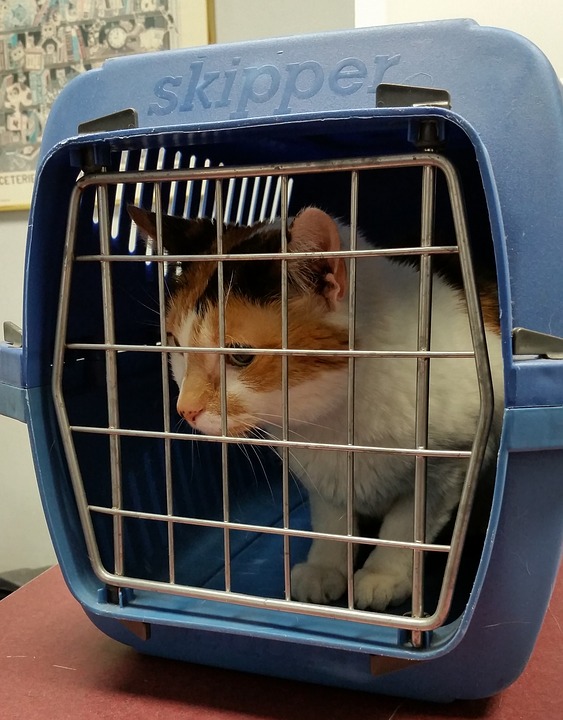Service vs. Emotional Support Animals: What’s the Difference?

Emotional Support Animals (ESAs) are becoming increasingly popular as an addition to the formal treatment for mental health conditions,especially depression and anxiety. ESAs are “prescribed” by mental health professionals for the alleviation of mental health symptoms.
A psychiatrist, psychologist, or licensed therapist typically writes a letter certifying their client requires additional support as part of their treatment.
Service Animals versus Emotional Support Animals
ESAs differ from service animals. Service animals are trained to perform specific tasks for a disabled person who cannot accomplish the task on their own. The use of service animals is protected under the Americans with Disabilities Act (ADA).
An ESA provides support to somebody who suffers from a mental condition, with the understanding that the presence of the animal helps the individual to better cope with the symptoms of their condition. These animals do not require any formal training.
While we tend to think of service animals as performing duties for physically disabled owners, service dogs can be used to assist individuals with psychiatric disabilities as well.

An individual with a mental health disability may require the assistance of a service animal if there are tasks that individual is incapable of doing on their own.
Examples of these tasks could be: fetching emergency anti-anxiety medication for someone with severe panic disorder, or checking surroundings to ensure safety for a person with PTSD. In this case, the person’s symptoms of PTSD may be so severe, they render them incapable of checking the area on their own.
These service animals provide essential functions that the disabled individual isn’t capable of, for example, guiding a vision impaired person across a busy intersection or a service dog fetching something for his wheelchair-bound owner.
So, those are the differences between the two. Just as the law allows accommodations for service animals, it also makes allowances for ESAs, especially as they relate to housing and travel.
In terms of housing, a landlord may be required to waive a restriction on pets. These housing protections fall under The Fair Housing Act.
Emotional Support Animals and Air Travel
Another law protects air travel with emotional support animals – the Air Carrier Access Act.
ESAs are given special consideration when traveling by plane, where they are permitted to travel in the cabin with their owners. Some airlines require documentation of the disability, so before you travel check with your airline.
Train travel may not be so accommodating, though. For example, Amtrak indicates on its website
The following types of animals are considered pets (not service animals) and are welcome on Amtrak if they fit into our carry-on pet guidelines:
Comfort Animals: Animals not trained to perform a specific task, but which are said to provide emotional support or to relieve anxiety simply by their presence (for example, by the passenger holding or stroking the animal).
In terms of access to restaurants and other public establishments, you should check with management about their policy on entering with your support animal.
A mental health professional must certify that the animal is needed to help someone with a mental health treatment. Some common conditions ESAs help with are depression, anxiety, autism, PTSD.
Why Emotional Support Animals are Effective
ESAs are effective for helping treat these conditions for several reasons. Animals naturally provides their owners with certain healing benefits.
Unconditional love
One of the most soothing forces is unconditional love. Unconditional love is not easy to come by, though. Most human relationships come with conditions. You can be at your worst, but your canine friend will still be ecstatic to see you regardless of your grouchy mood.
Animals don’t judge and they don’t criticize. Pets don’t recognize your weaknesses, foibles, and imperfections. As long as you take care of their basic needs, they are loyal companions, always anxious to see you walk through the door.

Alleviate loneliness
Loneliness has become an epidemic in our society. With increased mobility, many leave their families and relocate to different areas. In addition, an increase in the use of social media and technical devices cuts into in-person contact with others. Many of us spend more time in front of a screen then we do interacting with loved ones.
Distraction
With anxiety and mood disorders, the mind tends to ruminate on fears and negative thoughts. This becomes a cycle whereby the negative thoughts make somebody feel worse, and the worse they feel, the more negative thoughts their brain is generates. Being barraged constantly by negative thinking helps to keep people in an anxious or depressed state.
The responsibility of caring for another living being serves as a distraction from negative thoughts. Pets can be funny. Their goofy antics entertain us and give us a reprieve from overly focusing on negative ideas.
Sense of control
So much in our lives is out of our control, even some things we perceive we have control over. Feeling out of control of our environment and what happens in our lives is extremely anxiety-provoking.
A study in 1976 discovered that giving people a sense of control over their lives improved mood and overall outlook on life. Nursing home residents were split into two groups and given a plant for their room.
The first group was instructed to take full control over how to care for the plant. The second group was given the plant, but the staff was to care for it. Those residents were not given any say on how the plant was cared for.
The study results showed that the group who took responsibility for their own plants demonstrated an increased sense of self-worth and happiness.
Nurturing
Our pets rely on us for their very survival, which means we have to attend to most of their needs in order to ensure their well-being. The act of caring for our animals evokes our nurturing side, a tenderness that can only counter pessimism and worry.
Almost any domesticated animal can be used as an emotional support animal. The most common are emotional support dogs and cats; however, even exotic animals like snakes, birds, and rodents can be classified as an emotional support animal as long as they are certified by a mental health professional.
One downside of this increasingly popular additional to treatment of mental disorders is abuse of the practice. People have begun to have their pets designated as emotional support animals for other benefits, not out of necessity.
One unusual example was a woman who tried to board a plane with a peacock. The author in this New York Times article went so far as to call it a “scam”.
Using support animals to alleviate symptoms of emotional conditions is a great supplement to formal treatment. There are many practical benefits, as well. Caring for an animal is relatively inexpensive, especially when you compare it to the cost of weekly therapy.

Caring for another living being creates a sense of purpose. The company a pet provides helps to minimize loneliness. Focusing on the tasks related to caring for a pet is a distraction from negative thoughts.
While it’s not necessary to dress your emotional support animal in a vest or ID tag, there are products on the market that can designate her as an ESA.




